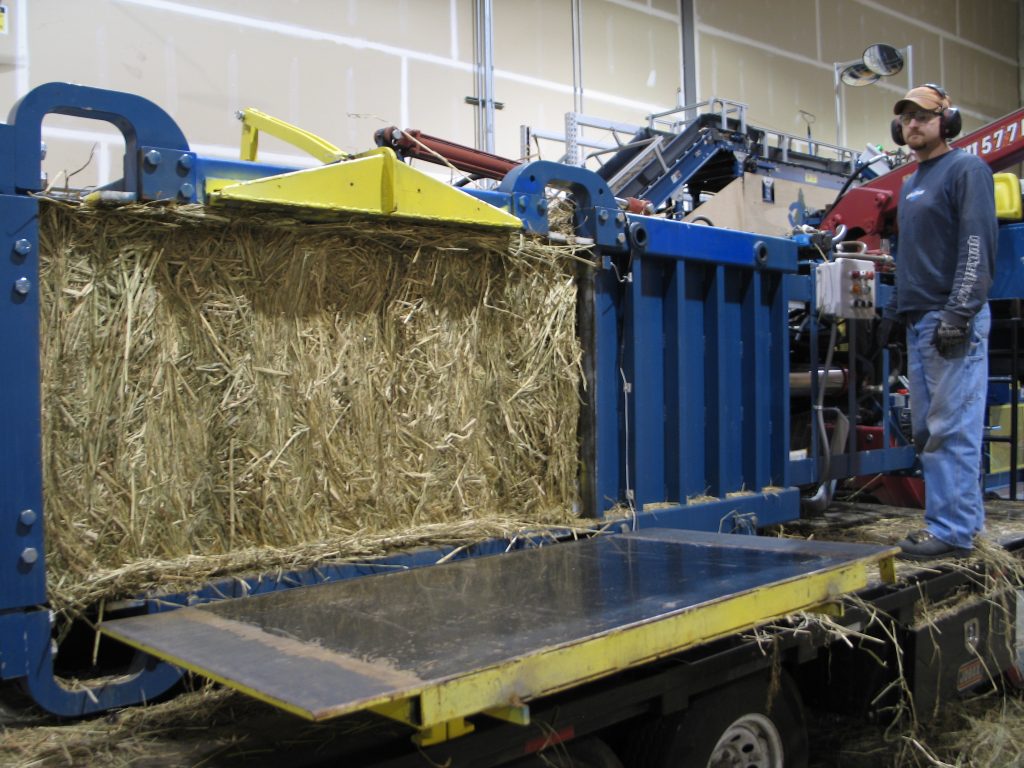Abstract
The productivity of forest biomass collection equipment is highly dependent on site conditions, spatial distribution of biomass, operator skill, and functional design of the equipment used. A prototype woody biomass baler was used to produce large rectangular bales of woody biomass. Rectangular bales enable high payloads during transport and efficient storage at centralized processing facilities. A series of empirical time studies were conducted using experienced operators to assess the baler-specific productivity of making bales of urban, forest thinning, and forest harvest residuals. This paper reports on the results of a forest harvest residuals baling study conducted during 2015. As with prior studies evaluating bundlers, bulk containers, and forwarders, grappling and arranging biomass with a boom-type loader consumed approximately 25% of the total time to make bales. Biomass gathering can only be improved by better arrangement during harvest operations. Platen cycling was a significant production rate factor and is directly related to chosen engine power and available hydraulic flow. Simulations of baler specific production rates (time to make a bale) were informed by field study data. Sensitivity analyses enable choice and specification of functional design attributes for commercial models
of woody biomass balers.
About the Publication
Wamsley, M. J., J. H. Dooley, C. J. Lanning and D. N. Lanning (2018). Work element time study for baling forest residual biomass into large rectangular bales. Auburn, WA, Forest Concepts, LLC: 16.
This material is based upon work supported by a grant from the U.S. Department of Energy under the Biomass Research and Development Initiative program: Award Number DE-EE0006297.
Read the full article in PDF format:

